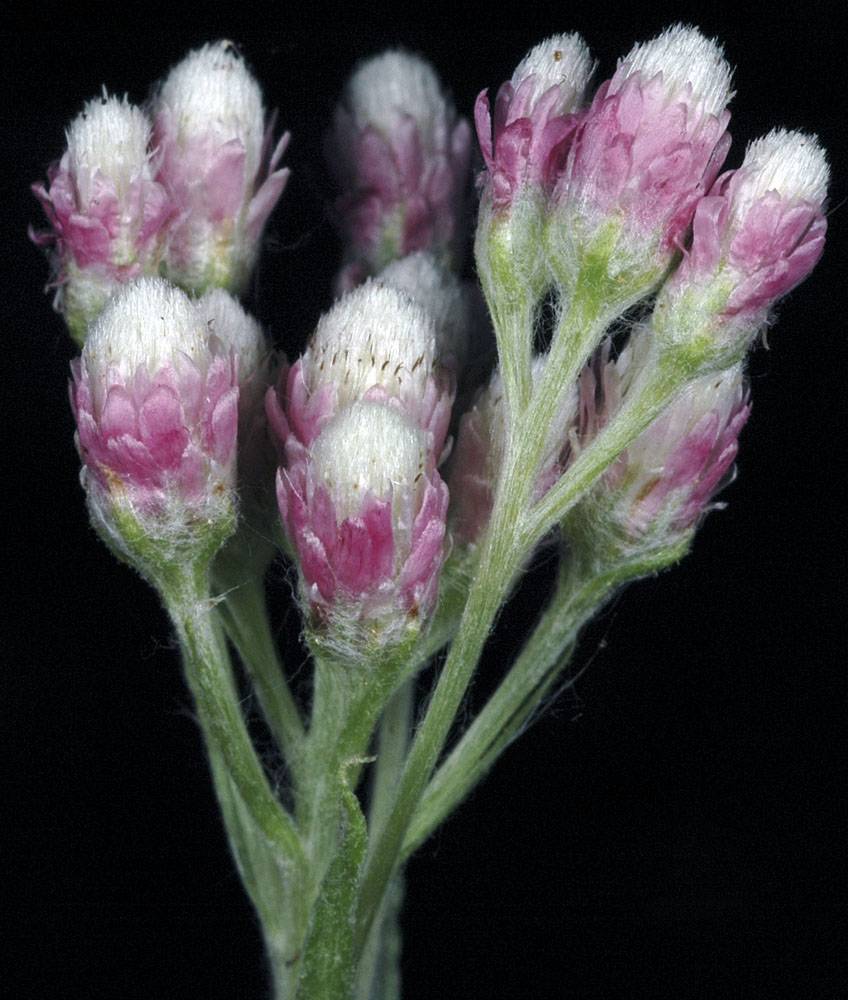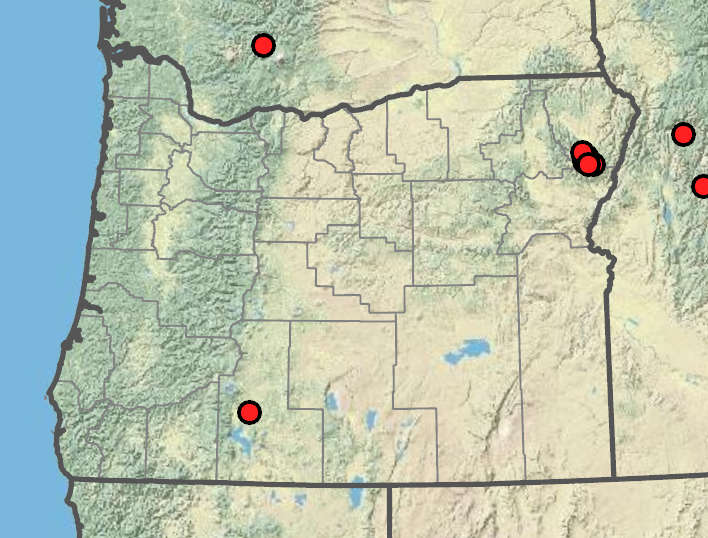Antennaria microphylla
(synonym of Antennaria rosea)
Antennaria pulvinata
littleleaf pussytoes, rosy pussytoes
aromatic pussytoes, pulvinate pussytoes
5–30 cm, rarely stipitate glandular distally.
2–7 cm, usually stipitate-glandular.
usually forming rosettes, spatulate to oblanceolate, 8–40 × 2–10 mm, 1-veined;
tips mucronate;
surfaces usually gray-pubescent, adaxially sometimes green and glabrous.
usually forming rosettes, cuneate-spatulate, rarely oblanceolate, 5–16 × 3–10 mm, 1-veined;
tips mucronate;
surfaces gray-pubescent, often glandular.
linear, 5–36 mm;
tips acute to subulate, usually not flagged.
linear, 3–14 mm;
tips acute, not flagged.
mostly glabrous to pubescent, staminate heads 4–8 mm, pistillate heads 4–10 mm.
mostly glabrous, staminate heads 4.5–6.5 mm, pistillate heads 3.5–4.5 mm.
distally white to yellow, green, red, pink, gray, or rarely brown;
tips rounded to acuminate.
distally light to dark brown or olive;
tips acute to acuminate.
0.7–1.5 mm, glabrous to papillate.
0.9–2 mm, papillate.
3–20 per stem; in corymb-like arrays.
2–5 per stem; in corymb-like arrays.
=28, 42, 56, 70.
=28, 56, 84.
Antennaria microphylla
Antennaria pulvinata
Rocky areas, meadows, forests, disturbed areas. Flowering May–Sep. 200–3000 m. BR, BW, Casc, CR, ECas, Lava, Owy, Sisk. CA, ID, NV, WA; north to AK, northeast to Greenland, east to NE, southeast to NM. Native.
Here we take a more inclusive approach and include within this species plants that some floras treat as A. rosea.
Limestone talus. Flowering Aug. 2400–3000 m. BW. CA, ID, WA; north to AK, northeast to Newfoundland, east to MI, southeast to CO. Native.
Oregon specimens of A. pulvinata have varying degrees of glandularity. This species includes both sexual diploid and apomictic polyploid populations that some floras may refer to as A. aromatica and A. rosea ssp. pulvinata, respectively (Chmielewski 1993).
Katie Mitchell, Stephen Meyers
Katie Mitchell, Stephen Meyers




